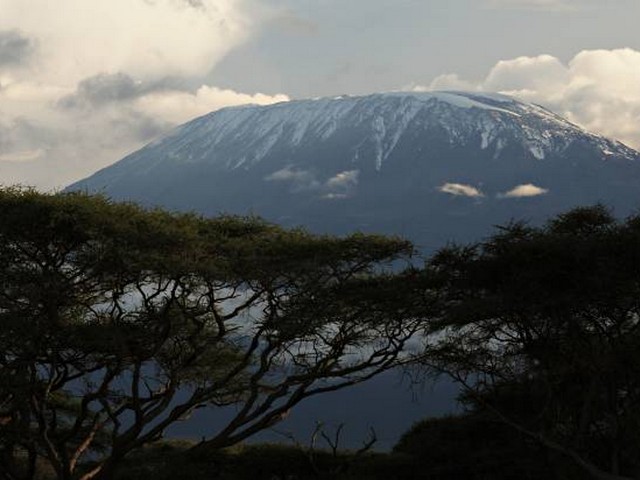How To Trek Kilimanjaro Sustainably
Standing majestically above the African plains, Mount Kilimanjaro is not just a mountain; it’s a beacon for adventurers worldwide. As the highest peak in Africa, its allure is undeniable. However, as we embrace the thrill of conquering this natural wonder, it’s crucial to tread lightly and respectfully. At Kilimanjaro Centre for Trekking and Ecotourism (KCTE), we are committed to helping you achieve this remarkable feat in the most sustainable way possible. Join us on a journey to the roof of Africa, where every step counts towards conservation.
Why Sustainable Trekking Matters
Trekking Kilimanjaro is not just about personal achievement but also about preserving its beauty for future generations. The mountain’s unique ecosystems and biodiversity are under threat due to the high number of visitors it attracts each year. Sustainable trekking ensures minimal impact on the environment, promotes local economies, and maintains the natural habitat.
Planning Your Sustainable Climb
Choose the Right Outfitter
Selecting an ethical and responsible tour operator is the first step towards a sustainable trek. At KCTE, we pride ourselves on being a leader in ecotourism practices. We ensure that all our activities are aligned with environmental conservation standards and benefit the local communities.
Best Time to Visit
The best times to climb Kilimanjaro are during the dry seasons, from late June to October and from late December to March. These periods offer favorable weather conditions and help reduce the trail erosion caused during the rainy seasons.
Packing List
Every item you pack should be eco-friendly. Opt for reusable water bottles, biodegradable soap, and solar chargers. Keep your load light to reduce the strain on porters and limit your footprint.
On the Mountain: Practices for Sustainability
Stick to the Trails
Preserve the fragile flora by staying on established trails. Shortcuts can cause erosion and damage the plant life that holds the soil together.
Waste Management
Carry out what you carry in. Dispose of waste properly by packing it out until you can dispose of it responsibly. Use the provided toilet facilities and avoid littering the pristine mountain environment.
Water Conservation
Water resources on Kilimanjaro are limited. Use water sparingly, and avoid bathing or washing clothes in streams and rivers, which are vital sources for the local communities and wildlife.
Respect Wildlife
Encountering wildlife is part of the Kilimanjaro experience. Maintain a safe and respectful distance, and refrain from feeding or disturbing the animals.
Supporting Local Communities
Employ Local Guides and Porters
At KCTE, we employ local guides and porters, providing fair wages and ensuring proper working conditions. This not only enhances your experience with rich local knowledge but also contributes to the local economy.
Buy Local
Purchase snacks, crafts, and souvenirs from local vendors. This direct form of support enriches community livelihoods and reduces the carbon footprint associated with importing goods.
After the Climb: Continuing the Commitment
Spread the Word
Share your sustainable climbing experience with others. Advocating for responsible travel practices plays a crucial role in promoting sustainability on a global scale.
Join Conservation Efforts
Consider contributing to conservation projects or community initiatives that work towards preserving Mount Kilimanjaro and supporting its inhabitants. Every small action adds up to significant impact.
Ready to Embark on Your Sustainable Kilimanjaro Adventure?
Trekking Kilimanjaro sustainably is an enriching experience that combines adventure with ecological responsibility. At Kilimanjaro Centre for Trekking and Ecotourism (KCTE), we are dedicated to guiding you on this incredible journey with the utmost respect for the natural environment and local communities. Book your climb with us, and be part of a movement that cherishes and preserves the beauty of Kilimanjaro for all who dream to follow in your footsteps.
Remember, when you choose sustainable practices, you’re not just climbing a mountain; you’re helping to save it. Let’s make your Kilimanjaro experience unforgettable and impactful!
FAQ: Trekking Kilimanjaro Sustainably
What is the best route for a sustainable climb on Kilimanjaro?
The less frequented routes like the Lemosho and the Northern Circuit offer a more sustainable option due to fewer crowds and less impact on the environment.
How can I ensure that my presence doesn’t harm Kilimanjaro?
Adhere to the Leave No Trace principles, stay on designated paths, manage your waste effectively, and use resources sparingly.
Can I participate in any conservation activities during my climb?
Yes, there are opportunities for tree planting and other conservation activities. Contact KCTE for more information on how you can get involved during your climb.
Is it expensive to climb Kilimanjaro sustainably?
Sustainable climbing might come with a slight premium due to the higher costs associated with eco-friendly practices and fair wages for crew members. However, this cost supports environmental conservation and community development, making it a worthwhile investment.
How can I verify that my tour operator is truly committed to sustainability?
Look for certifications and affiliations with recognized environmental and tourism organizations. Ask about their sustainability policies and practices, and how they benefit the local community and environment.
Embark on your Kilimanjaro journey with Kilimanjaro Centre for Trekking and Ecotourism (KCTE), where your adventure contributes to the sustainability of this majestic mountain. Contact us today to plan your responsible climb and be a part of preserving Kilimanjaro for generations to come.




